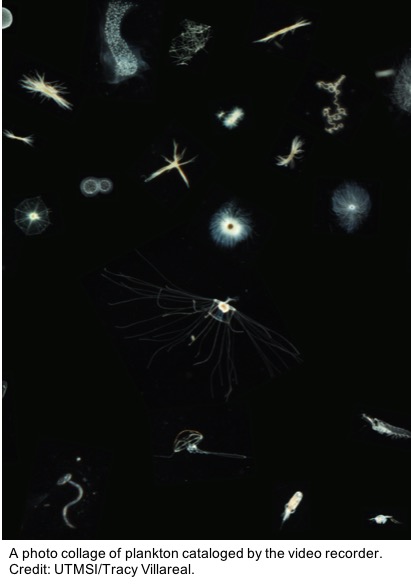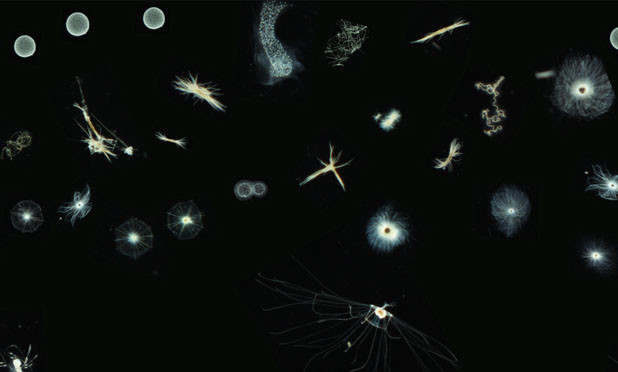 PORT ARANSAS - This summer, biological oceanographer Tracy Villareal cashed in some frequent flyer miles and caught a flight to hop onboard a cruise off the coast of Oahu, Hawaii. The cruise had all the promise of relaxation: calm seas, crystal blue water, plenty of high definition videos to watch. The cruise however wasn’t a normal voyage, but then again Tracy Villareal isn’t a normal biologist. The cruise was aboard the research vessel R. V. Kilo Moana to a time-series station that scientists have been visiting for over 30 years, and Tracy Villareal, a phytoplankton biologist turned tech enthusiast was offered a free berth to test a new underwater video recording device. The video recorder is the modern version of a camcorder, except this sleek camera is shaped like a miniature bat mobile on a sled. It can withstand pressures that would crush a soda can instantaneously and can record high definition images of plankton smaller than a grain of sand. In fact, the data it can gather while underwater rivals the space a full season of The Office takes up on a hard drive. Associated hardware from its device called CPICS is so unique that it has the potential to use deep learning software to understand how plankton migrate through the water column and change the oxygen and nutrient concentration in the upper part of the ocean.
PORT ARANSAS - This summer, biological oceanographer Tracy Villareal cashed in some frequent flyer miles and caught a flight to hop onboard a cruise off the coast of Oahu, Hawaii. The cruise had all the promise of relaxation: calm seas, crystal blue water, plenty of high definition videos to watch. The cruise however wasn’t a normal voyage, but then again Tracy Villareal isn’t a normal biologist. The cruise was aboard the research vessel R. V. Kilo Moana to a time-series station that scientists have been visiting for over 30 years, and Tracy Villareal, a phytoplankton biologist turned tech enthusiast was offered a free berth to test a new underwater video recording device. The video recorder is the modern version of a camcorder, except this sleek camera is shaped like a miniature bat mobile on a sled. It can withstand pressures that would crush a soda can instantaneously and can record high definition images of plankton smaller than a grain of sand. In fact, the data it can gather while underwater rivals the space a full season of The Office takes up on a hard drive. Associated hardware from its device called CPICS is so unique that it has the potential to use deep learning software to understand how plankton migrate through the water column and change the oxygen and nutrient concentration in the upper part of the ocean.
Villareal’s work was recently awarded a grant from the National Science Foundation to continue the study. In fact, this recent cruise was the first of many, Dr. Villareal will set off from Hawaii again this spring on the one of six cruises in 2020 and eight in 2021 to test seasonal phytoplankton variations. “With any new piece of technology, it’s crucial to do some beta testing. I was just fortunate to be able to iron out some of the kinks before the full cruises begin,” said Villareal. Villareal’s research hopes to shed light on the role that large, rare phytoplankton play in nutrient and oxygen patterns found in surface waters or the open sea. This is linked to a long-standing question whether the open sea is an actually a source or sink for carbon dioxide.










